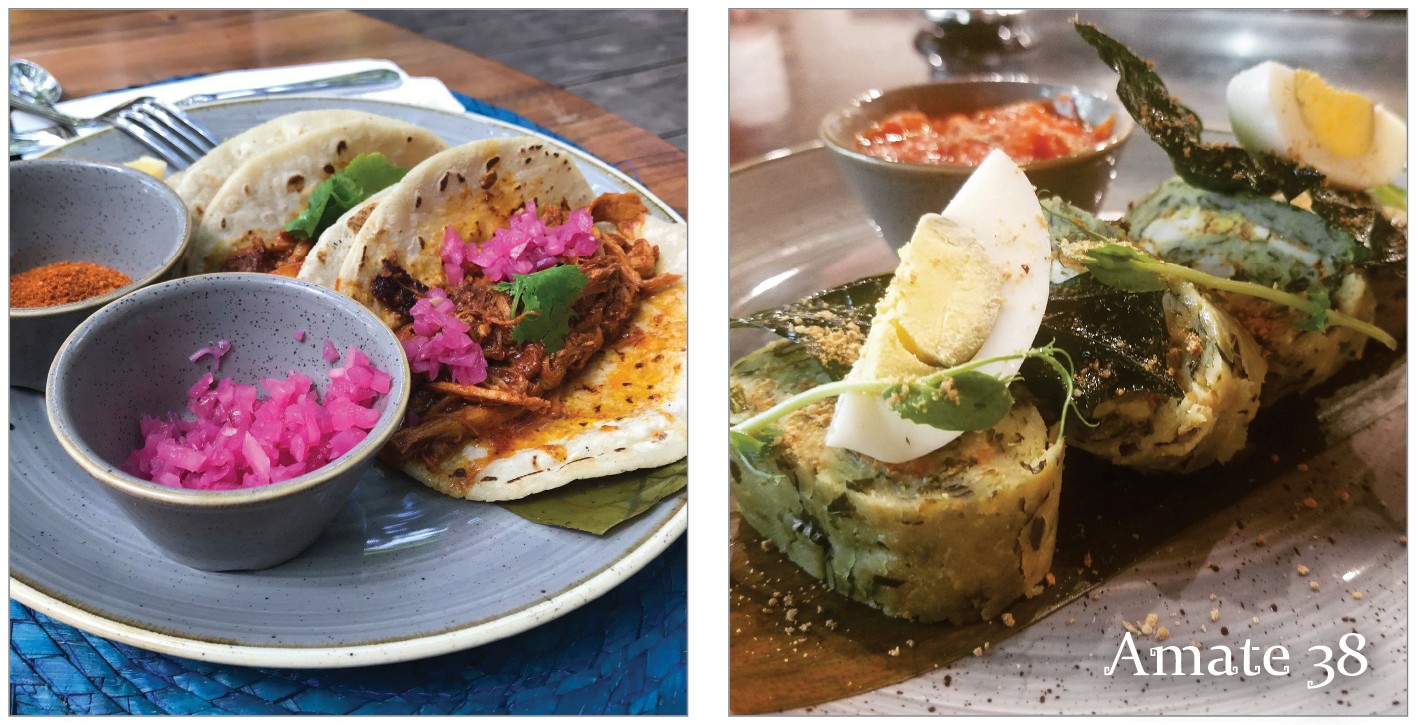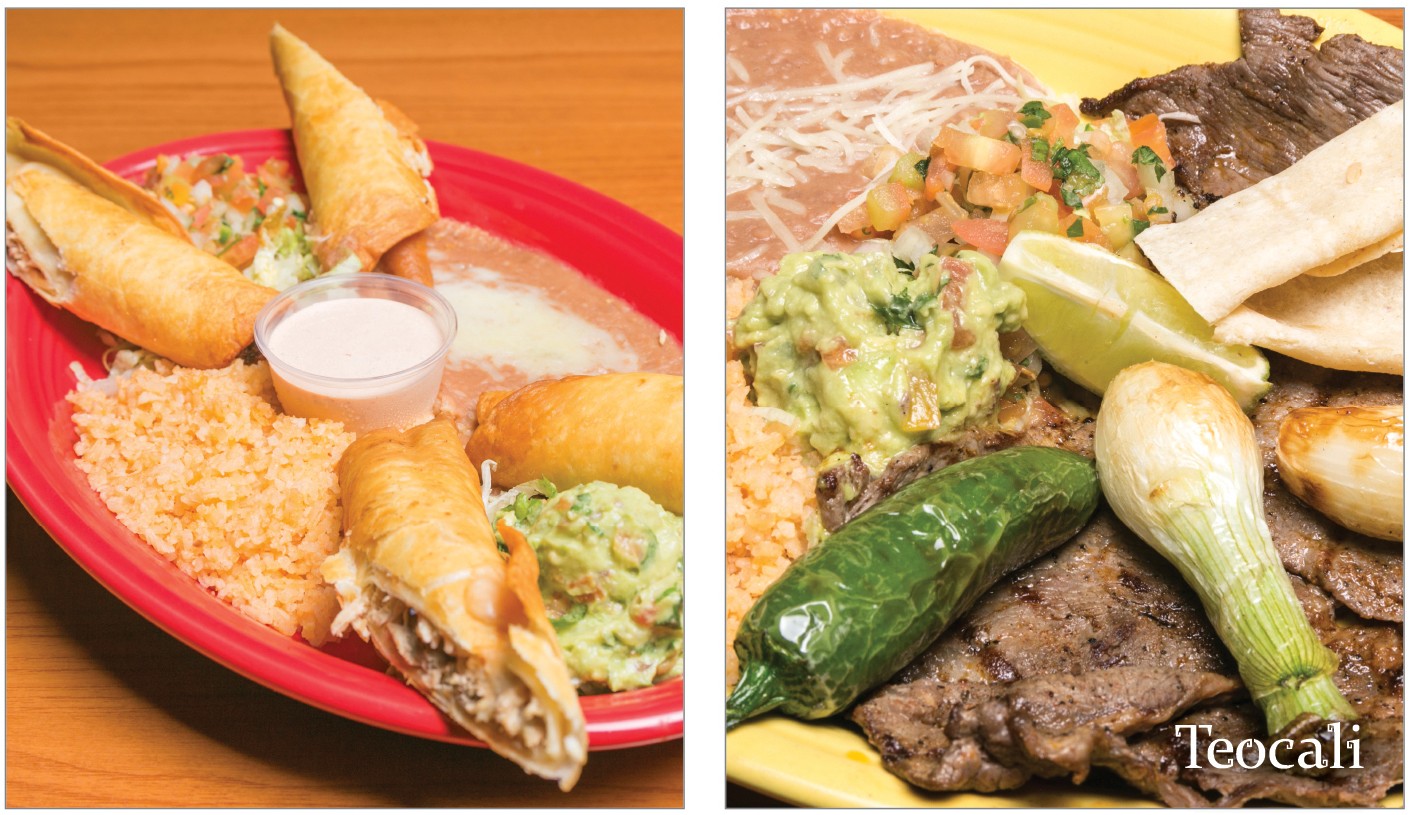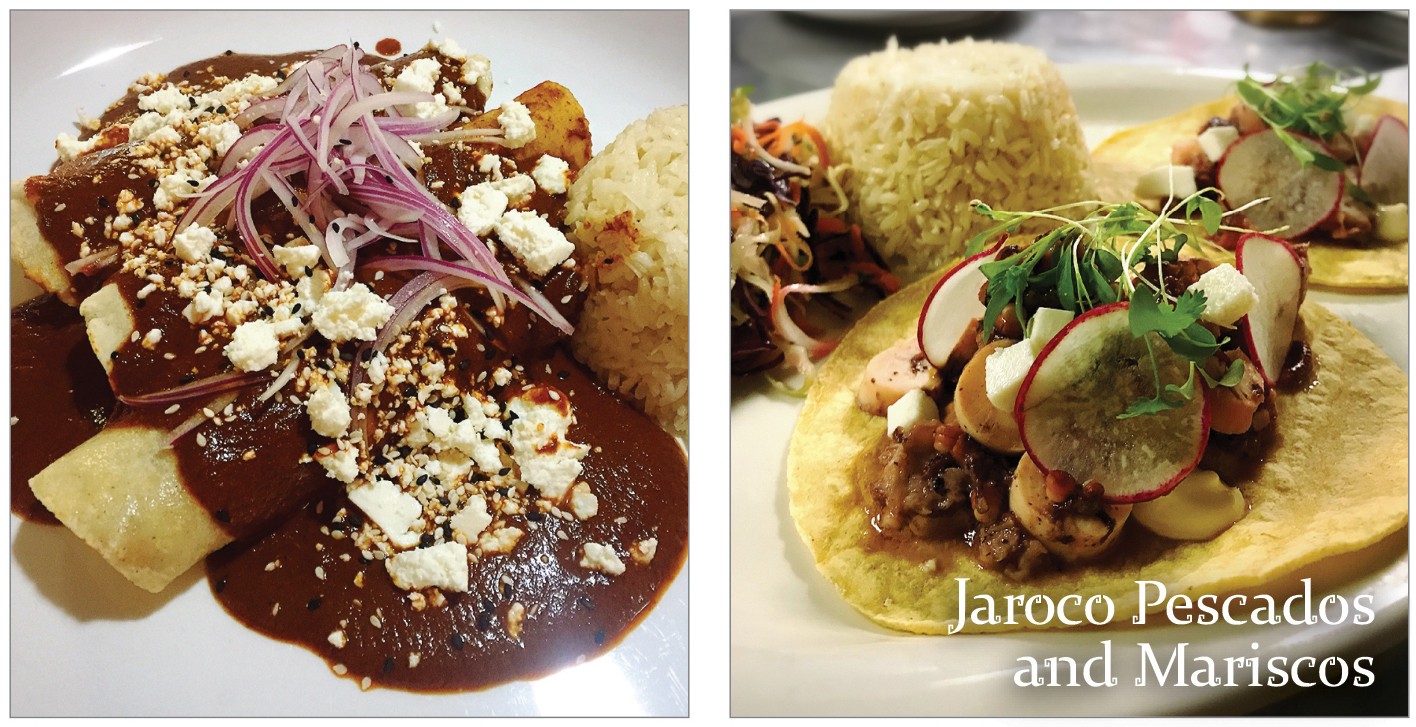Story by Dave Eckert
When Renee Demott, the publisher of this magazine, suggested an article on Mexican cuisine for Indulgences, my first reaction was, “How the heck am I going to define something as complex as Mexican food in 750 words?” But, never one to back down from a food challenge, off I went. First, let me set the record straight on what ISN’T Mexican food, but rather Tex-Mex, a completely different selection of dishes created north of the border. The differences can be summarized by a few ingredients commonly found in Tex-Mex food, but rarely used in Mexico. If you’re eating something with beef, yellow cheese, wheat flour tortillas, black beans, canned tomatoes, and/or cumin, it’s Tex-Mex, not Mexican. I’m not saying enchiladas, burritos, and fajitas can’t be delicious. They can. They just shouldn’t be called Mexican, just like grilling a burger or a hot dog shouldn’t be described as barbecue!
So, what IS Mexican cuisine? Well, that’s a very big question that I posed both here in Kansas City and in Mexico. The first definition I got came from a chef at the excellent restaurant, Amate 38 on 38th Street in Playa Del Carmen, Mexico. My wife and I dined there twice during our week in Playa and the meals were amazing. So much so I wanted to know how the chef defined his cuisine specifically and Mexican cuisine in general. “Cuisine from the Yucatan Peninsula,” is what chef Obed Chale calls the food at Amate 38. That includes a plenty of fresh fish, including a wonderful seared tuna steak in a lime sauce, Cochinita Pibil, smoked pork with a slightly spicy sauce that absolutely melts in your mouth, and fresh corn tortillas made on-site in the restaurant every night. If this is traditional Yucatan food, I need to spend more time here. It’s fantastic!
So, how about Mexican cuisine as a whole? Turns out, I was thinking regionally while Chale (a traditional Mayan name) was thinking historically. “For me, it all starts with indigenous food, that is the cuisine that was here before the Spanish arrived. After they came and introduced new ingredients and cooking techniques, everything changed,” Chale told me. “What came after was first colonial cuisine, then fusion, and finally, contemporary Mexican cuisine.”
You will find great examples of the latter throughout the Kansas City metro. One of my favorite restaurants featuring contemporary, or regional Mexican cuisine, is Teocali located on Holmes on Hospital Hill. I spoke with Enrique Gutierrez who started the restaurant nearly 13 years ago based in part on the recipes he ate as a child in Teocaltiche, Jalisco. “The most traditional Mexican food for me growing up were our tamales. They were always present, especially around Christmas when the moms, aunts, grandmothers, and sisters all gathered around the kitchen and made tamales, Gutierrez recalled. “The other thing from our part of Jalisco was the red pizole.” Most people know pizole, a wonderfully spicy soup, as being more brown or clear, but Gutierrez says radishes and red chilis produce a red pizole unique to the region. Then there’s birria, a spicy stew made from goat meat (primarily organ meat), which is served on street carts and in restaurants throughout Jalisco, but especially in the capitol city of Guadalajara.
Local and regional cuisine based on local and regional ingredients and traditions varies from state to state, and from towns and regions within the states. For example, Gutierrez is from inland Jalisco, so the cuisine he knows features more meat. If you travel to Puerto Vallarta, also in Jalisco, but perched on the Pacific Ocean, you’ll find seafood ceviche and a wide array of grilled and fried fish. At Teocali, you experience what Gutierrez calls old school Mexican food. “We have very traditional dishes. We serve tacos like you will find in Mexico. We make our own chorizo. Our salsa is made fresh every day. We try to do as much from scratch as authentically as we can,” Gutierrez said.
Across the border, in Kansas City, Kansas, you will find the wonderful Jaroco Pescados and Mariscos under the guidance of chef-owner Carlos Falcon. Falcon, a native of Vera Cruz, Mexico, says, for him, Mexican cuisine is all about finding the most authentic, freshest, and delicious ingredients he can then applying modern techniques and methods to his cooking and presentation. “My concept of Mexican cuisine is very complex. It’s really based on the resources that that the people have on hand. That’s what their version of Mexican cuisine is based on,” Falcon shared.
As with Gutierrez in Jalisco, Falcon finds vast differences in the cuisine of his home state of Vera Cruz as you head from the coast into the mountains. Falcon is from the city of Vera Cruz on the Gulf of Mexico, so it’s not surprising his dishes revolve around seafood and other ingredients that come directly from, or nearby, the water. But Falcon says if you go just 20 miles inland, the products and dishes change dramatically. “For example, close to the coast when people make moles, they don’t use tomatoes because tomatoes can ferment in the heat. But inland in higher and cooler elevations, they use tomatoes in their moles because that’s not an issue,” Falcon pointed out.
“I try to find the best possible ingredients in Mexico and elsewhere, bring them here and apply the best techniques for preparing them,” Falcon stated. “I also want to focus my cuisine on ingredients and dishes that are forgotten or overlooked.” You’ll find Bluefin Tuna served over sea beans in a sour orange sauce with an haberno glaze, Octopus en Tinta (Octopus served in its ink), and an outstanding Veracruz fish filet, a steamed fish filet served with tomato, onion, jalapeño, capers and olives.
North or south of the border, and anywhere you go in Mexico you will find things that are unique, indigenous, and delicious, and that’s the best definition of Mexican cuisine I could possible provide.









